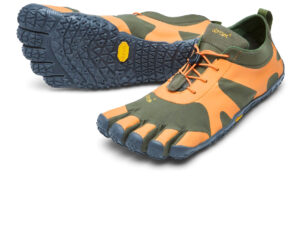Barefoot shoes are a type of footwear that is designed to allow the foot to move more naturally. They have a thin, flexible sole that provides minimal support, and they often have a wider toe box to allow the toes to spread out. Now that we’ve covered that off – here’s the real deal on how your Barefoot Shoes work for you.
There are a number of ways that barefoot shoes work. First, they allow the foot to move more naturally – essentially going back to the way we used to do things. When you wear traditional shoes, the thick sole and rigid structure can restrict the natural movement of the foot. This can lead to problems such as muscle weakness, poor balance, and decreased proprioception (the ability to sense the position of your body in space). Barefoot shoes, on the other hand, allow the foot to move more freely, which helps to strengthen the muscles and improve balance. Best part is, all this will happen without you even realizing it. Your body will adapt on its own.
Second, barefoot shoes can help to reduce the risk of injury. When you wear traditional shoes, the cushioned sole can absorb impact, which can protect the joints from injury. That sounds good you’re thinking! Nope. The cushioned sole can also make it difficult to feel the ground though, which can lead to problems such as overstriding and pronation. Badddd! Barefoot shoes, on the other hand, allow you to feel the ground more, which helps you to land more softly and avoid overstriding and pronation. Goodddd!
Third, barefoot shoes can improve foot health. When you wear traditional shoes, the toes are often cramped in a small space, which can lead to problems such as bunions and hammertoes. Barefoot shoes, on the other hand, have a wider toe box, which allows the toes to spread out naturally. This helps to improve circulation and reduce the risk of foot problems. This is how nature intended us to be – not all crowded into little shoe prisons.
Here are my top tips for transitioning to barefoot shoes:
- Start by wearing barefoot shoes for short periods of time, such as around the house or for short walks. Baby steps, literally.
- Gradually increase the amount of time you wear barefoot shoes each day – we’re all about moving on up!
- Avoid wearing barefoot shoes on rough or uneven surfaces – just go steady, you know what feels right for you and what does not.
- If you experience any discomfort, take a break and go back to it the next day. Breaks are nice too, ya know.









